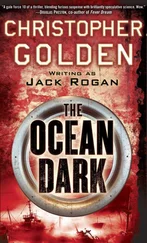On February 16, Wilbur Ross’s Commerce Department announced the results of its own investigation to justify steel and aluminum tariffs, beating Lighthizer to the punch. Their tariffs, based on Section 232 of the Trade Expansion Act of 1962, were based on national security rather than economic concerns, which was rare and therefore controversial. And only 6 percent of those tariffs applied to China—the rest were against allies like Canada, Mexico, South Korea, and the European Union. “Had we timed it differently, it would have been better,” one White House official later reflected. “Things just got confused with everybody just doing whatever they wanted.”
Still, when Lighthizer’s 301 investigation report finally came out in late March 2018, it was damning. Lighthizer reported that Chinese illicit practices, including intellectual property theft, forced technology transfer, and unfair subsidies, were robbing the US economy of at least $50 billion annually. He had given the hawks a lot to work with—not only with his diagnoses but also with his prescriptions.
Peter Navarro and Steve Bannon may have wanted Lighthizer’s investigation to move faster, and Bannon surely still wished as much, given that he had been fired in the interim. But for Navarro and others in his camp, the results of the 301 investigation had proved to be well worth the wait. It called for drastic countermeasures: enhanced export controls, tariffs, and broad bans on Chinese investment in US companies.
Lighthizer’s report gave powerful ammunition for those in Trump’s orbit who were fighting for tariffs. His team proposed that the first tranche—15 percent on $50 billion of Chinese exports to the United States—should focus on industries that make up Xi’s hallmark technology strategy, called Made in China 2025. The idea of those fighting for tariffs was to target the technologies of the future, thereby limiting the actual economic impact today. They thought that would be more palatable to Trump and cause less collateral damage to the US economy. “Technology is probably the most important part of our economy,” Lighthizer said in announcing the report. “And we concluded that, in fact, China does have a policy of forced technology transfer; of requiring licensing at less than economic value; of state capitalism, wherein they go in and buy technology in the United States in non-economic ways; and then, finally, of cybertheft.”
On April 3, the Office of the US Trade Representative released its list of 1,333 Chinese products that composed $50 billion worth of goods, adding detail to Trump’s tariff threats, which were at that point still only threats. The next day, Beijing published its own list of 106 US products it was threatening to tariff, targeting the transportation and agriculture sectors hardest. An angry Trump responded the following day by announcing he was now considering tariffs on an additional $100 billion worth of Chinese goods and he warned China not to harm American farmers.
For the Goldman Sachs crowd inside the Trump team, it was now clear Trump was barreling toward the trade war they had been fighting against since day one. They reacted in different ways. As it became clear he was losing the internal fight over the tariffs, Gary Cohn resigned. Mnuchin was not done fighting and still believed he could find a way to stop the trade war before it started. As Trump and Xi traded threats, he prepared to go to Beijing to try to stave off the implementation of tariffs by negotiating a quick deal.
The hawks and the hardliners, meanwhile, were satisfied. They had gotten the president to embrace the idea of using pressure on China. What’s more, they had shown that even when Trump played hardball, the Chinese leadership would still negotiate and the markets wouldn’t collapse. “Remember, the initial Chinese position had been that they would never negotiate while the tariffs were in place,” said former Trump National Security Council China official Matthew Turpin later. “Clearly, that didn’t pan out. So the whole concept that if you take an action, the sky will fall, was disproven. We had to shift the Overton window of acceptable policy options.”
The China Lobby
Lighthizer’s report had made three broad recommendations: enhanced export controls, tariffs, and broad bans on Chinese investment in US companies. The tariffs, as well as the broad bans on Chinese investment, were anathema to a pro-business type such as Mnuchin. Sure, he had supported FIRRMA, which was aimed at halting Chinese investment that might jeopardize national security—but for him, shaping the new CFIUS guidelines was a way to outflank Lighthizer and convince the White House to avoid the harsher measures. “Mnuchin got behind FIRRMA so much because it gave him the opportunity to short-circuit the thing he didn’t like,” Hanke said later. “I’m not sure he was a true believer that Chinese investment was a big problem.”
There were, of course, many others inside the Beltway who stood to lose out from new, stricter regulations on Chinese investment—and while they couldn’t short-circuit parts of the FIRRMA legislation as easily as Mnuchin could, they weren’t about to go down without a lobbying fight. Crapo and Hensarling were taking flak from several interest groups that stood opposed to the legislation, including the chamber of commerce, Wall Street lobbyists, and industry association groups. But Cornyn’s staff chipped away at the opposition by working the industry groups from the inside, trying to gain key allies inside them to at least blunt their ability to criticize the bill.
This strategy required compromises that were uncomfortable for national security hawks involved in the process. The final language of the bill denied CFIUS the ability to create its own list of emerging and foundational technologies that would fall under its purview—in other words, to determine its own jurisdiction. This would provide Beijing with huge loopholes that it was sure to exploit.
There would be other compromises before the bill finally got enough support to become law. The thing that American companies hated most about FIRRMA was its restrictions on joint ventures—which, although they were often used as a pretense for Chinese companies to strip American firms of their intellectual property, also gained those firms access to the Chinese market and helped them make a great deal of money in the short term. In the process of getting the bill through committee and eventually attached to the National Defense Authorization Act, those restrictions were cut.
It was rare and significant that such a major reform bill got through the process at all, but nobody knew yet exactly how it would change the game. One thing, at least, seemed certain: without stronger rules to govern joint ventures between American and Chinese companies, Beijing’s ability to transfer technology and knowledge through pressure would continue—as would the ability of certain Americans to profit from it. Because just as certain people in Congress see an advantage in aiding and abetting China, so too do certain American corporations. For instance, GE.
Nowhere were the problems posed by joint ventures in China during the era of military-civil fusion clearer than in the example of General Electric. GE has had a joint venture going back to 2011 with the Aviation Industry Corporation of China (AVIC), the state-owned aviation conglomerate, dealing with jet engines and avionics. Chinese commerce minister Chen Deming and then-US commerce secretary Gary Locke attended the public signing of the agreement in Chicago.
Every year, the Pentagon puts out an annual report on China’s military power. Before the GE-AVIC joint venture, jet engines and avionics were both things this report identified for years as shortcomings in the technological advancement and ambitions of the People’s Liberation Army. After the GE deal, avionics fell off the Pentagon’s list as a Chinese shortcoming. GE essentially solved the People’s Liberation Army’s avionics problem.
Читать дальше











